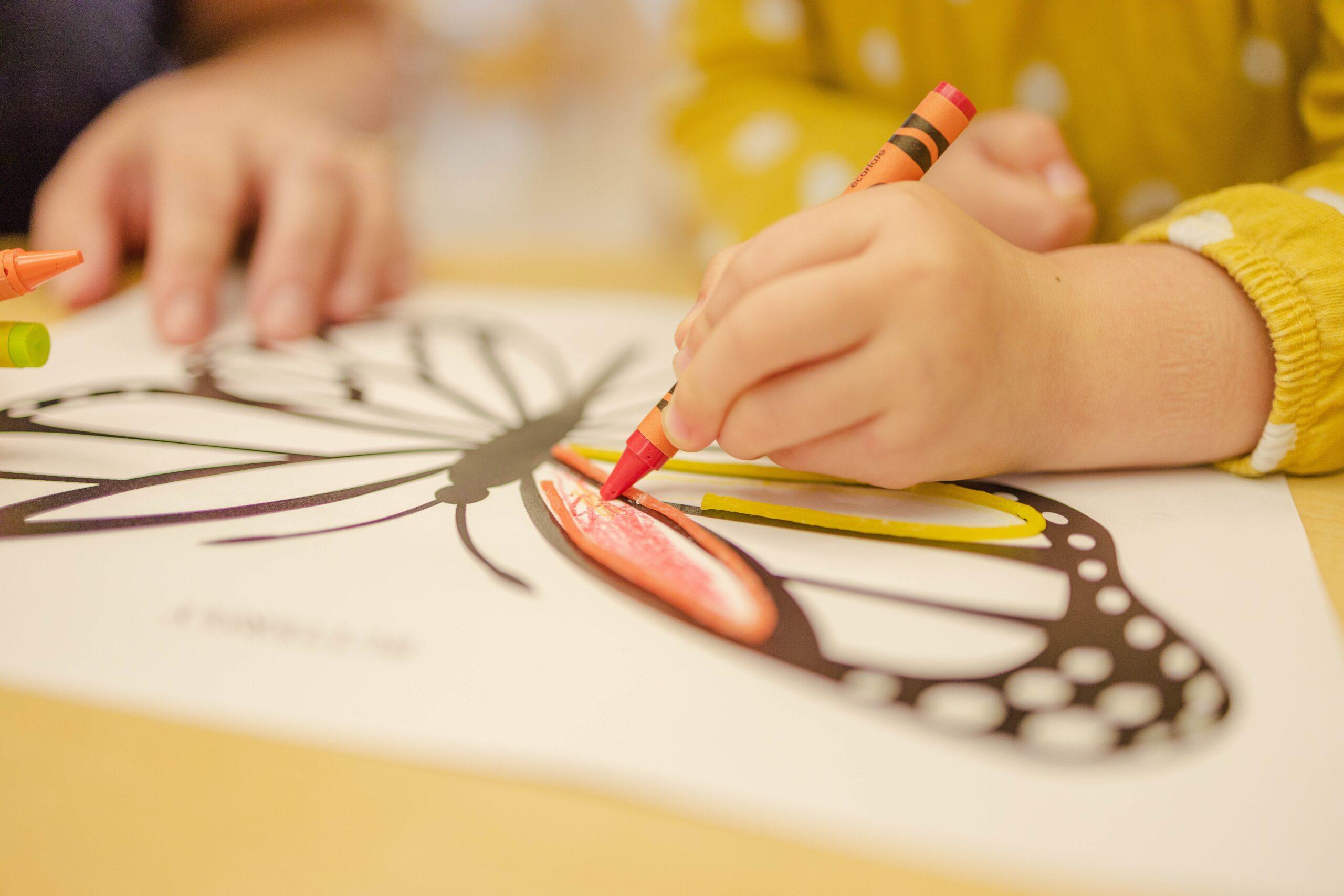Reading basic words, forming letters and numbers, solving math problems— these skills are important for kindergarten success. To help your child establish such skills and ease the transition into kindergarten, there are several strategies you can do at home. The exercises outlined here are fun, engaging and educational. Grab some note cards, markers, colored sand and a cookie sheet, and let’s get to work!
The ability to decode or sound out words is one of the most crucial skills for school success. It is often emphasized in kindergarten classrooms. Yet before students can decode words, they need to develop an understanding of the names of the letters and their corresponding sounds. By learning these letters and sounds, students can ultimately blend the sounds together to read words.
How can you reinforce this skill at home?
Start by teaching your child groups of five letters at a time that include four consonants and one short vowel. Begin with some of the easier letters and sounds to master, including p, f, s, t and the short vowel a. For every letter that you introduce, create a colorful note card with the letter on the front and a picture that begins with that letter on the back. For example, for the letter p, you would write the letter “p” on the front of the card with a black marker. You might use pizza as the corresponding picture. Draw (or cut out from a magazine) a colorful picture of a pizza on the back of the card. Feel free to add mushrooms, pepperoni— the works! Create similar note cards for all of the letters in this group. Some suggestions for pictures are fish for f, sun for s, top for t and apple for a.
Now put those cards into action. Hold the letter side of the first card up to your child, such as for the letter p. Say, “This is the letter p, like pizza (flip card around). It makes the sound /p/ (flip card back around).” Then have your child repeat that sequence to you. The goal is for your child to repeat that sequence back to you three times as you reverse the card for the picture name and turn it back around for the sound.
Once you have completed the audio-visual card drill, you are ready to work on forming lower case letters with sky writing. You should model the formation of the letter first (we’re still on p), by holding your hand in the air, and, using your pointer and middle fingers, saying aloud as you draw, “When we write the letter p, we go down, up and around.” Make sure you draw a big letter in the air as your child watches. Next, your child should repeat the same motion in the air with you. He or she can even stand up while drawing to engage gross motor muscles. The goal is for him or her to draw the letter in the air three times, without your help or modeling.
Here’s where the fun part comes: sand writing, an exercise that many kids love. Purchase colored sand from an art supplies store and pour it onto a cookie sheet. You can even use kitchen salt. Using your pointer and middle fingers again, model the formation of the letter, such as p, in the sand. As you trace a p, you say aloud, “down, up and around.” Then shake the sand and have your child trace the formation with you in the sand. Again, the goal is for your child to trace the letter independently three times. You can try this exercise with flour while you are cooking, sand while at the beach or dirt in the park.
For paper writing, use a sheet of lined paper that is geared for kindergartners. Draw dotted lines for each letter and have your child trace each letter ten times. Then have your child try to write each letter independently ten times, without tracing.
Putting It All Together
Follow that same sequence of activities for every letter in the group you are working on, whether it’s the letters p, f, s, t and a or n, r, c, k and e— or another alphabetical assortment. Once you have finished the exercises for a group of letters, put your cards back into a pile and review. Hold each card up separately to your child. He or she should be able to tell you, without guidance, the name of the letter, picture and sound for each letter. If you notice any difficulties, practice the steps again.
Reading
Once your child has a fluid knowledge of the letter names and sounds of at least one alphabetical group (four consonants and one short vowel), work on teaching your child to blend those letters for form words. A starting point for this reading activity is to place the “a” card in front of your child. Ask him or her to tell you the sound that a makes. Then put the t card next to the a card and ask your child what sound t makes.
Consider saying, “As we know that a is pronounced /a/ and t is pronounced /t/, what happens when we blend those sounds together? We form the word at.” Try that exercise with different letters from the group. Perhaps, hold out the a and p cards to form ap— the words can be real or nonsense. Eventually, add in a third letter: “/p/ /a/ /t/ reads pat!” You can add in magnetic tiles, letter blocks and a white board with markers to make this exercise more entertaining.
If you keep practicing these exercises, your child can be reading in no time. Remember to keep the exercises as fun, engaging and multi-sensory as possible. The more you practice, the easier the exercises become for your child, and the more excited he or she is to start kindergarten.

